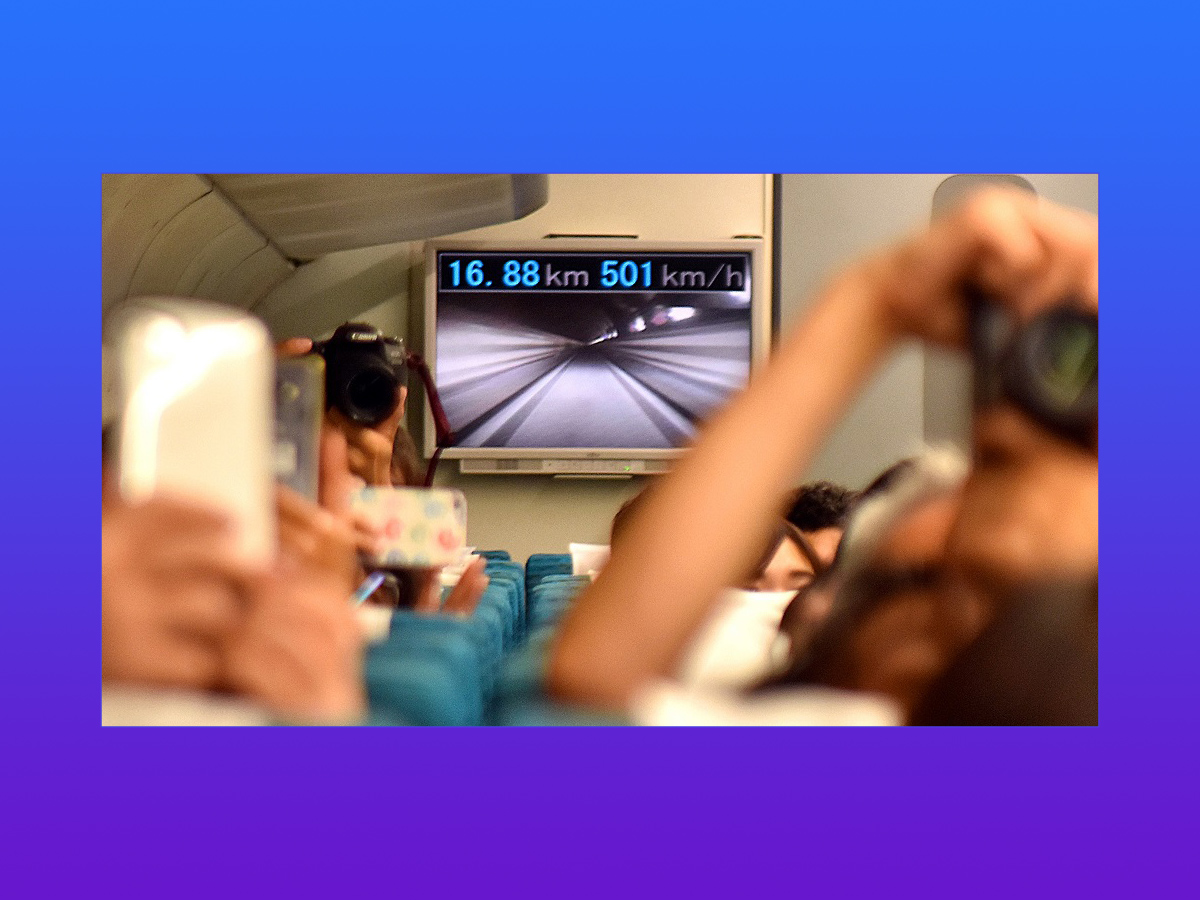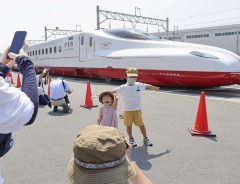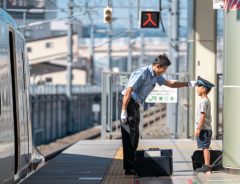
Source: © JAPAN Forward
Tokyo to Osaka in an Hour: Future Fastest Bullet Train to Create Mega-Economic Region
- Source:
- © JAPAN Forward
- Tags:
- JR / linear / maglev / SCMAGLEV / Transportation
Related Article
-

Suica Offering Travellers to Eastern Japan Best Travelling & Shopping Experience Yet
-

Nostalgic Items and Stories: Special exhibition on the history of transportation in Yokohama
-

‘Kamome’ Bullet Trains Stand by for New Shinkansen Line in Kyushu
-

Japanese Train Conductor Makes Boy’s Day, Twitter Cry With Touching Gesture
-

Japanese “Human Uber” Lets Users Attend Events Via Another Person’s Body
-

Tokyo Offers “Rescue Bus” For Drunken Passengers Who Miss Their Last Train Stop


Mizuki Okada, JAPAN Forward
In the future, if you’re in a hurry, you will be able to get from Tokyo to Osaka in less than 67 minutes, or stop in Nagoya in even less time.
JR Central featured its future fastest bullet train in a test-ride event on October 3 in Yamanashi Prefecture. Media taking part were able to experience the Superconducting Magnetically Levitated (SCMAGLEV) vehicle for themselves and imagine the future.
JR Central has released a film in English illustrating what daily life might be like in the future with the Linear bullet train. The Linear, as it is currently called, will open up between Shinagawa/Tokyo and Nagoya in 2027. Then it will extend to Osaka, with full operation expected in 2037.
The Japanese government has proposed a Super Megaregion Initiative for Japan’s sustainable economic development as the county faces a depopulation problem. The Linear project is expected to help boost the flow of people and contribute to Japan’s further economic growth.
At Yamanashi Linear Maglev Center in Tsuru City, Yamanashi Prefecture, the Linear vehicle drove forward, then accelerated to almost 150 kmph (93mph). Its tires were pulled into the bottom of the train as it reached around 150 kmph, and the train magnetically levitated 10 cm above the track. Right after that, the train surpassed over 500 kmph (almost 311 mph).
The project is a window into the future in which trains will levitate above their tracks by using SCMAGLEV technology, achieving a maximum speed of 505 kmph. The Linear construction project expects to realize connections between Tokyo’s Shinagawa Station and Nagoya in 40 minutes, and Osaka in 67 minutes.
The full cost of construction connecting Tokyo and Osaka is projected to be around ¥9 trillion JPY ($82.7 million USD). It will take ¥5.5 trillion JPY ($50.5 million USD) to first build the SCMAGLEV infrastructure between Tokyo and Nagoya, according to JR Central.
Connecting the Tokyo, Nagoya, and Osaka regions by travel of merely an hour will give rise to a mega-economic region containing 65 million people, half the population in Japan. It is expected to contribute significantly to Japan’s further economic development.
Passengers of Tokaido Shinkansen will also see the benefits of more convenient travel once the Linear’s operation begins.
There will be six stations, one in each prefecture between Tokyo and Nagoya, except Shizuoka, which will be bypassed using a deep underground tunnel through the South Japanese Alps. The stations will be at Shinagawa (Tokyo), Kanagawa, Yamanashi, Nagano, Gifu, and Aichi (Nagoya).
(...)
Written by Japan ForwardThe continuation of this article can be read on the "Japan Forward" site.
Tokyo to Osaka in an Hour: Future Fastest Bullet Train to Create Mega-Economic Region